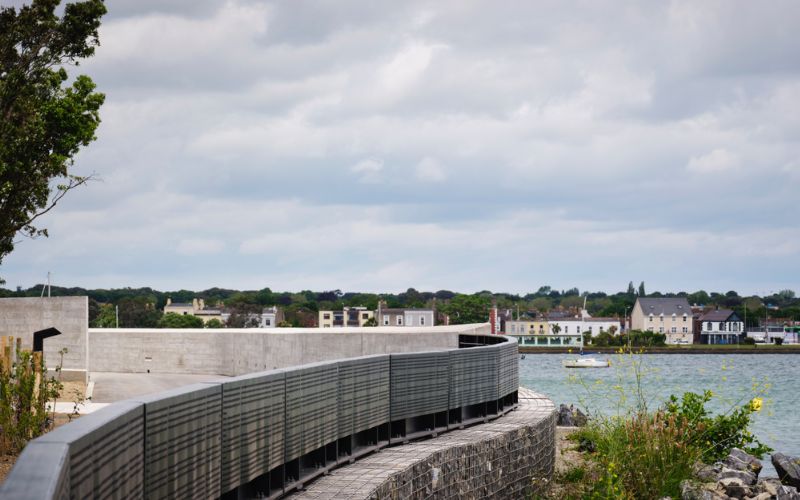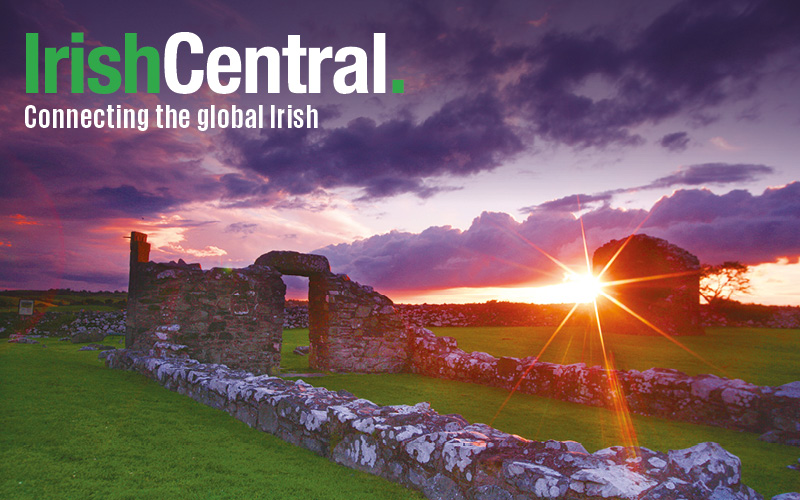At certain junctures it feels right to visit Ireland, to go home. This is one such moment.
For an Irish-American looking to travel ‘home’ this summer, there are plenty of reasons why now is the right moment to do so.
For one, a new Tourism Ireland campaign seeking to inject new life into the Irish market has unearthed some creative reasons why now is indeed a good time to visit. The upcoming events schedule would have even the most hesitant of travelers hopping onto the next Aer Lingus flight to the land of greenery, brown envelopes, and Cuchulainn. Upcoming events include the Dublin Horse Show, the 3 Irish Open, the Wexford Opera Festival and the Galway Arts festival.
Most encouraging though, is that despite the obvious economic tinges to this new campaign, there’s a genuine element of the Irish government seeing the light and deciding –whether economically motivated or otherwise– to reach out to its overseas cousins and brothers in America and try bring them home, at least for a vacation.
It won’t be long before a vacation to Ireland will be even cheaper, thanks to the proposed ‘Certificate of Irishness’ certificates that the government is proposing to launch to the Diaspora. So why not reciprocate the enthusiasm and come see what’s new, and what’s old, in the forty shades of green?
One of the most encouraging reasons to visit could be the newfound progress that the Northern Irish peace process has made.
The once iron curtain border, if now a border at all, is for all intents and purposes a purely cultural one. Physically, it’s practically imperceptible, and there’s never been a better time for a citizen to consider himself an inhabitant of the island of Ireland rather than the Republic or North.
It’s hard to not want to see for yourself how Ireland feels in the wake of such monumental change; I certainly do.
Money is tight everywhere nowadays, and fortunately there’s also never been a cheaper time financially for an American to visit the emerald isle. The Dollar-Euro exchange rate, has shifted wildly in favor of Americans visiting Ireland.
At the time of writing one dollar buys you almost 80 cents of Euro. Parity, according to the commentators, is on the cards. There’s hardly ever been a time when the rate has worked out so favorably for American tourists coming to Ireland, and with the Euro now ranking as one of the weakest major world currencies, it’s never made more financial sense to visit Ireland and take advantage of the currency market.
Despite all these reasons, though, the traditional reasons for wanting to visit Ireland still reign supreme.
It’s a beautiful country and one bursting at the seems with things for a tourist to do. There are attractions in literally the four corners of the country
While the most popular tourist attractions may still remain things that could be called the ‘staples’ of Irish tourism trade: such as bars have never been as diverse a tourist destination as it currently is.
Staples, though, should not be ignored for being just that. There can be nothing cliché about sampling a traditional meal of a pint of Guinness coupled with a slice of freshly baked brown bread because no matter how many times the experience is repeated it’s still amazing.
Ireland’s tourist trade also caters for all sorts of holidaymakers. Whether your idea of a holiday involves complete independence or whether you favor the more ready-made package tour, Ireland can offer something to suit your needs.
Car rental from major companies is available from practically every major airport, allowing a new arrival to hop right into a car and begin a road-trip on his or her schedule. For the tourist who prefers for professional organizers to take the work out of the holiday there are plenty of options ranging from bus or train tours to hotel deals that combine stays with planned activities.
Perhaps one of the most surprising aspects of modern Ireland for a first-time visitor or for one who hasn’t visited in several years is the changed and changing face of Irish society. A visitor to Ireland who hasn’t been back home for several years could be forgiven for thinking that Polish had become a national language. It hasn’t, of course, but the influx of Poles, Eastern Europeans, and other migrant workers has made a strong and positive contribution to Irish society and given its own cultural flavor to an already culturally rich country.
Besides the Polish and Eastern Europeans other large ethnic communities in modern-day Ireland include the Chinese, as well as people from other parts of Asia. All consider themselves proud Irish and contribute in no small measure to a new and evolving image of Ireland.
Sporting-wise the country is also undergoing a transformation. Ireland’s always been sporting mad, but the modern Irish are expressing that love of sports in more ways than ever before.
Surfing is the fastest growing sport in the country, and the ‘surfing holiday’ is one of the new 21st century ways of experiencing the country. Other ‘new’ sports like cricket, American football, and even baseball, are all growing in popularity.
It would be amiss, of course though, to visit Ireland and fail to partake in some of the country’s more traditional sports. going to a live rugby, soccer, or GAA match is definitely a ‘must’ for any visitor to Ireland
Tourism has always been one of the most valuable sectors of the Irish economy, and Ireland has a long and proud tradition of providing top class hospitality and dining at reasonable - if not always unbeatable - prices.
For those whom surfing is now a bygone dream or memory there are plenty of sports suitable for the older market. Golf is one of Ireland's most-played and most famous sports. Ireland’s golf courses rank among the finest in the world, and Ireland has traditionally always enjoyed great success at international golfing tournaments. Just recently Graeme McDowell of Portrush, Northern Ireland won the US Open at Pebble Beach, adding his name to a long and distinguished list of Irishmen who have achieved success at the top echelons of American professional competition.
Fishing, another of the more sedate sports, is another popular Irish past-time, and Ireland’s inland waterways and extensive coastline are both host to a wide and interesting variety of both freshwater and saltwater fish. Wiling away an afternoon with just a fishing rod and a good friend for company is one of Ireland’s favorite quiet pastimes.
Perhaps the strongest reason to visit Ireland, whether you’re an Irish-American or just curious about Ireland, would be to sample Ireland’s culture. Although ‘culture’ is constantly being re-written, there’s something constant about Celtic-Irish heritage that will never change no matter what economic or political state Ireland finds herself in. The Irish language, for many, encapsulates the essence of Irishness, although is unfortunately maintaining a steady decline as a spoken tongue by the population. Nevertheless, fortunately, there are still small pockets of the country - the gaeltachtanna - where Ireland is the main spoken language.
Irish dancing and traditional Irish music, which generally go hand-in-hand, continue to thrive around the country. Many more traditionally decorated Irish pubs put on ‘trad’ nights during which local folk musicians come to play traditional Irish music on traditional instruments, such as the uileann pipe. Such sessions are a great way to relax with a drink and enjoy some traditional Irish music, dancing, and language.
Irish people are also renowned for their friendliness and openness, and tourists will quickly discover this on a visit to Ireland, with the Irish going out of their way to accommodate tourists and help them get the most out of their stay.
In fact perhaps one of the problems of visiting Ireland is that there’s often simply too much to do in a short space of time.
Although Ireland is a small island of just 32,000 square miles, it boasts a continuously changing and very diverse landscape. From the cities of Cork and Dublin to the rustic coastline of Connemara, there’s hardly one out of Ireland’s thirty-two counties that offers anything in the way of blandness.




Comments